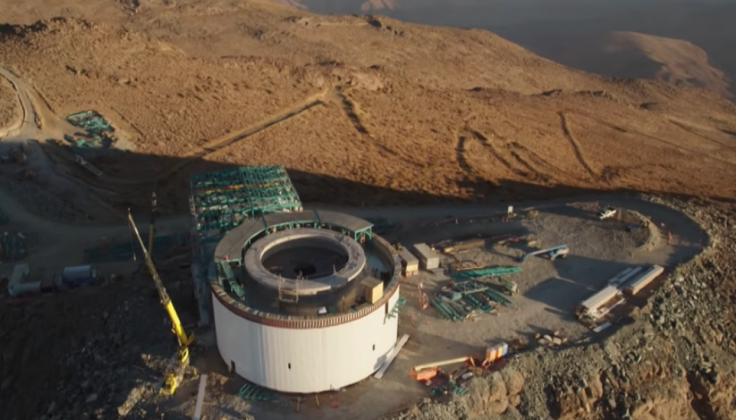
The Large Synoptic Survey Telescope from Chile might one day provide the 'deepest, widest image of the universe'. The construction of the telescope began in 2015 in Chile and shall start functioning in 2022.
Three years after its construction, latest video shows how the giant mountaintop facility is gradually turning out. The video was presented by Assembly Integration Verification Manager Jacques Sebag and was made using a drone. The team was previously working with Besalco and tried developing the facility's mobile roof into a flatter area.
It will capture 800 images every night and will be taking pictures of the entire sky at least twice a week. The telescope has a 3.2-gigapixel camera and requires 1500 high-definition screens to display only one image. The camera will then be turned towards space. According to the LSST team, the camera will be covering each patch of sky 1,000 times during the survey, reports MailOnline.

Its light-gathering power is equal to a 6.7-m diameter primary mirror and its 30-second observations can detect objects which are 10 million times fainter to the naked human eye. It can capture objects as big as far-distant galaxy clusters, meteors or asteroids. The camera is similar in size to a small car and weighs more than three tons.

The camera is the eye and heart of LSST and can provide details of the distant space, galaxies and probably alien life. LSST will be capturing digital images every few nights from Chile's Mount Cerro Pachón.
In 10 years, LSST can detect at least tens of billions of objects and can provide details about different galaxies, solar systems, and might end up discovering new stars and galaxies.
LSST vs NASA, India, China

The Large Synoptic Survey Telescope might prove to be a major competitor for China, India and NASA's digital telescopes for that matter.
The Five-hundred-meter Aperture Spherical Telescope (FAST) from China is equivalent in size to 30 soccer fields. According to Zheng Xiaonian, deputy head of the National Astronomical Observation under the Chinese Academy of Sciences the telescope holds the capability of capturing strange objects, as well as discover extra-terrestrial life.
NASA's James Webb Space Telescope is all set to look for signs of extra-terrestrial life on the newly discovered TRAPPIST planetary system and on Jupiter's moon Europa. Eric Smith, James Webb Space Telescope Director at NASA Headquarters in Washington said that the telescope can discover "the very first galaxies after the Big Bang, chemical fingerprints of life on Enceladus, Europa, and exoplanets like TRAPPIST-1e".

The Giant Metrewave Radio Telescope is considered to be the world's largest radio telescope from India. It was pioneered by radio astronomer Govind Swarup and was built in 1990. It started functioning from 2002. Its 30 giant antennae weighing 80 tons can cover 80 percent of the sky. This giant is eyeing for extra-terrestrial life and radio waves coming from the aliens or some other alien planet.
Whether the Large Synoptic Survey Telescope will be successful in discovering alien life in the universe or not, only time can tell.









